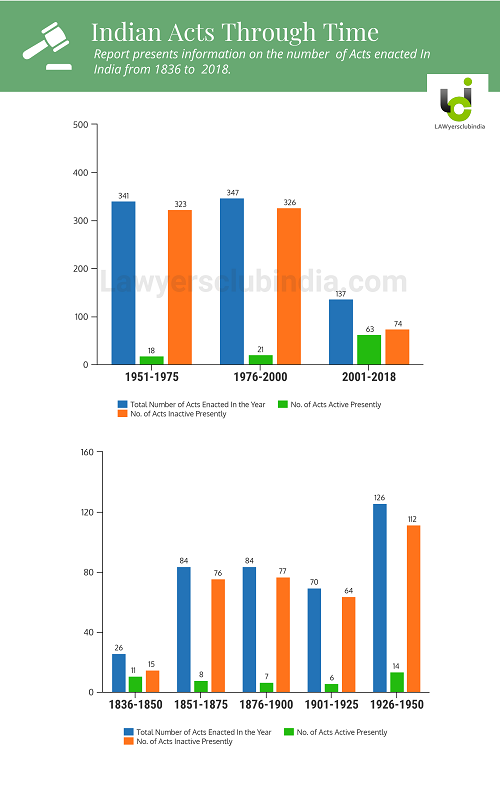The land of religion, culture, festivals and diversity, our motherland is also the land of laws since times immemorial. India has seen tremendous growth and transition through the years in every field and law has not been excluded.
Tracing the history of laws in India, from religious prescriptions of Vedas and Upanishads to the Law of precedents by the Britishers has been a journey rhapsodic.
The first recorded evidence of Laws in India are faced as Vedas and Upanishads. After that came the Bronze Age which had the savage laws of exchange. As the rulers gained power in different parts of the country, king’s rule evolved. The Mauryas and Chalukas contributed to the court system which was passed on to the Mughals as they gained power.
The real transition came with the Britishers who after the first of Independence in 1857 crowned themselves as the rulers of India, with the Queen as it’s Empress. This gave way to the proper law of precedents and legislation.
The acts enacted from the mid-1770s till 1830s were known as the East India Company Acts, from 1830s to mid-1900s- the Acts of The Government of India and the Laws from 1950 onwards- The Acts of Parliament of India. The visit of the Britishers was the next big thing for India and led India to where is now, ignoring the adversaries of course!
Around 390 Acts were passed till the 1930s by the East India Company, until the country gained it’s independence, out of which about 46 are still in action. During this period, the Mayorial courts were abolished and replaced by modern courts with Privy Council occupied by the Law Lords as the highest court of appeal.

To name a few important acts – Banking Regulation Act of 1949, Reserve Bank of India Act of 1934, Child Marriage Restraint Act of 1929, Ancient Monument Preservation Act of 1904, Land Acquisition Act of 1894 and many such follow.
The dawn of Independence saw the Parliament of Independent India being forged along with an illustrative document to guide the generations to come. The nation saw it’s torchbearers in the lawyers of the country which can hardly be overstated. B.R Ambedhkar’s keen legal mind lifted the responsibility of enacting the fundamental law of the land. India saw it’s first leader in ChachaNehru and paternal fore-figure in Gandhi. The 3-tired democracy took the Constitution as the guiding light for all the laws to come. After the Independence, the legislators produced laws like rabbits and very rightfully confused enacted law on every topic.
A whooping 341 Acts were enacted from the year 1951 to 1975. The laws were forged aptly strict for a closed and scared economy like India. Such laws were further in production for almost a decade from the LPG policy in 1991. From 1976 to the new era, the 19th century, again around 347 acts were devised. Out of these 688 Acts only around 39 are actively in force today.
The years from 2000 to 2018 saw the reigns of the steaming horse pulled a bit and managed to do with 137 enactments( Around 63 of which are in use ) as the base was already provided by the seniors and most of the laws found the convoy they belonged to or got adopted rather than being a nomad dealing with a separate and ambiguous set of topics. During these 68 years, our parliament contributed in construction of about 80 to 90 percent of the laws.
Thus, going through this cascade of data, one can say that India has one a basket, little too big full of laws and enactments and the reputation it enjoys as the land of most illustrative set of laws is justified and well allotted. Hoping to see this cultivation improve in quantity and quality in the times to come as is the need of the hour!
Join LAWyersClubIndia's network for daily News Updates, Judgment Summaries, Articles, Forum Threads, Online Law Courses, and MUCH MORE!!"
Tags :Others












